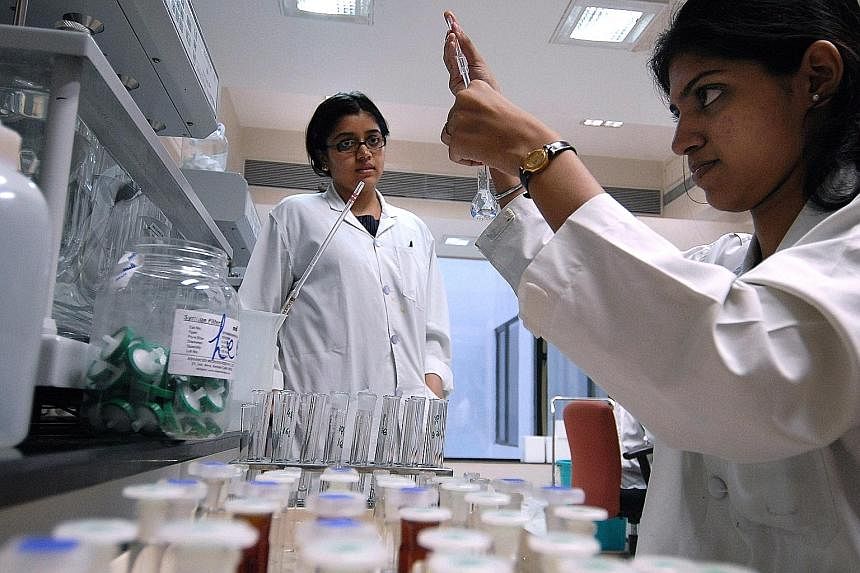IT IS 7 o'clock on a Friday night, and I'm still in the lab. Earlier in the day, as I was looking through old data, I unexpectedly found the answer to a question that I had been trying to address for a year.
It was one of those rare "eureka" moments in science. But it wasn't as though, in an instant, a spotlight fell on the pictures of cells I'd been staring at, clearing up all mystery.
No, it's the beginning of a new mystery, and I will have to repeat months' worth of experiments. The other postdoctoral fellow in our group is also here late, the lights over our work area the only ones illuminating the floor. He offers to share his data and some research tools; I gratefully accept.
Would Nobel laureate Tim Hunt argue that this scene is likely to be charged with sexual tension? After all, I am female, and Dr Hunt, a biochemist, said at a conference earlier this month that his "trouble with girls" in laboratories is "you fall in love with them, they fall in love with you and when you criticise them, they cry".
He must have feared the possibility that two scientists might find themselves alone late at night, with the aphrodisiac power of scientific revelation unloosing their inhibitions.
Actually, I doubt he is concerned about romantic entanglement between lowly postdocs. His "trouble with girls" was more likely rooted in his experience as a principal investigator, the head of an independent laboratory.
He was swiftly censured for his remarks, and forced to resign from an honorary professor post and from several high-profile committees, which indicates how seriously institutions take the problem of gender bias.
Still, women remain under-represented at the top levels of bioscience, despite greater gender parity at the undergraduate and graduate levels. I believe Dr Hunt's statements give us a clue as to one reason the pipeline leaks.
Twenty-first-century science has much in common with the mediaeval apprentice system. Young scientists - graduate students and postdoctoral fellows like myself - join the laboratory of an established principal investigator, who is rarely involved in hands-on experimentation but has near-absolute authority in hiring.
Only when the lengthy training is complete might a young scientist hope to establish her own laboratory; even then, she will always be known as having trained in Dr So-and-so's lab.
Sadly for young women in science, top male scientists might feel having them as trainees is more trouble than it's worth. A study published last year in the Proceedings of the National Academy of Sciences found that, on average, male scientists train fewer women than female scientists do.
This trend is exaggerated for elite male scientists - their labs are even more biased towards men - but the gender bias is not observed in top labs with female heads.
Encouraging women to train under female mentors won't help, as there simply aren't enough female lab leaders. In the study, women represented nearly half of the graduate students in the biosciences, but only 21 per cent of full professors were female. Among the scientific elite, women make up an even smaller fraction - of the 24 Nobel laureates included in the study, two were women.
Certainly, many men are full-throated advocates for women in science, but others profess their scepticism openly. One scientist I trained with told me he did not feel women were cut out to be truly successful in the field, as they were likely to be too distracted by their families. He cited his own wife, a scientist with whom he clearly shared a family.
Given this landscape, a "girl" who is lucky enough to land in a prestigious laboratory might be expected to put up with a lot to stay there. Recently, a postdoctoral fellow asked a career advice columnist with the journal Science about the problem of her mentor trying to look down her shirt.
The columnist, Dr Alice Huang, advised her not only to put up with it, but also to do so with "good humour". This response raised a furore and was soon retracted.
Even so, I found myself thinking that the counsel was regrettably sound. Getting on your mentor's bad side could ruin your career.
When female scientists come together, we invariably ask "how do you do it?", usually in a whisper.
For one thing, you borrow an extra-large lab coat when yours won't button over your baby bump. I went back to work in the lab while my premature twins were in the neonatal intensive care unit, to save my maternity leave for when they arrived home. But this is no different from the hard choices other ambitious women face in many fields.
What sets female scientists apart is the absolute requirement of high-quality mentorship. As long as the scientific enterprise continues to be populated by people who might find it amusing to hold forth on the "trouble with girls", women will receive inferior mentoring, compared with their male colleagues, which will lead directly to inferior career outcomes. That is the real trouble.
The writer is a molecular biologist.
NEW YORK TIMES

